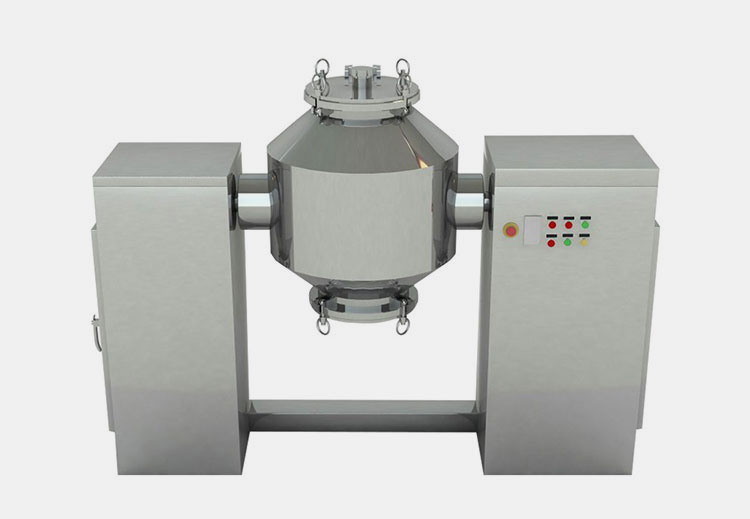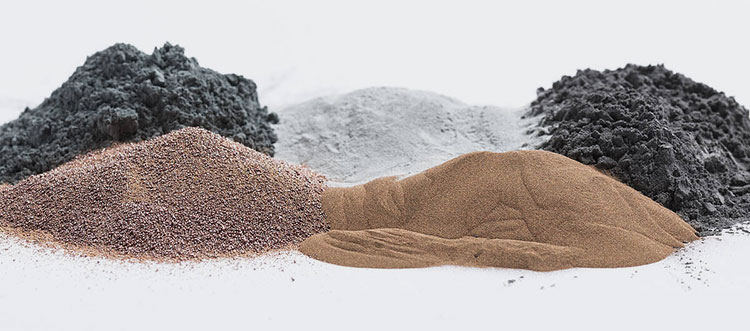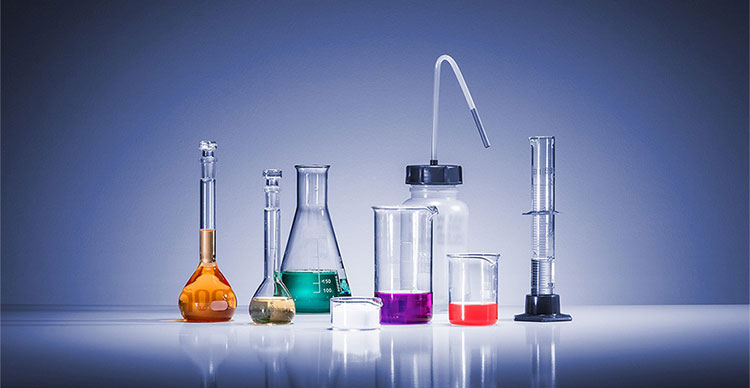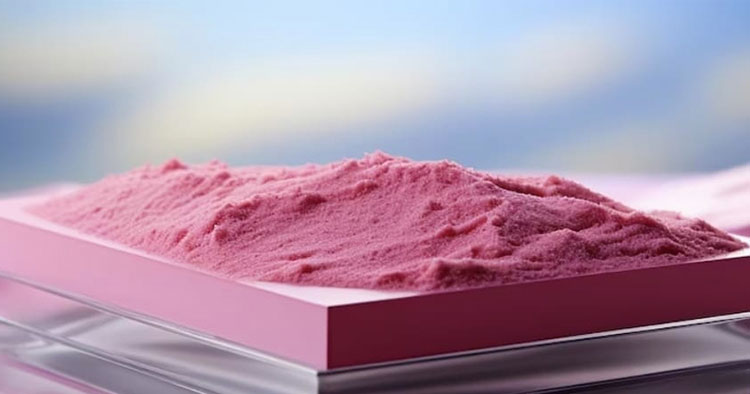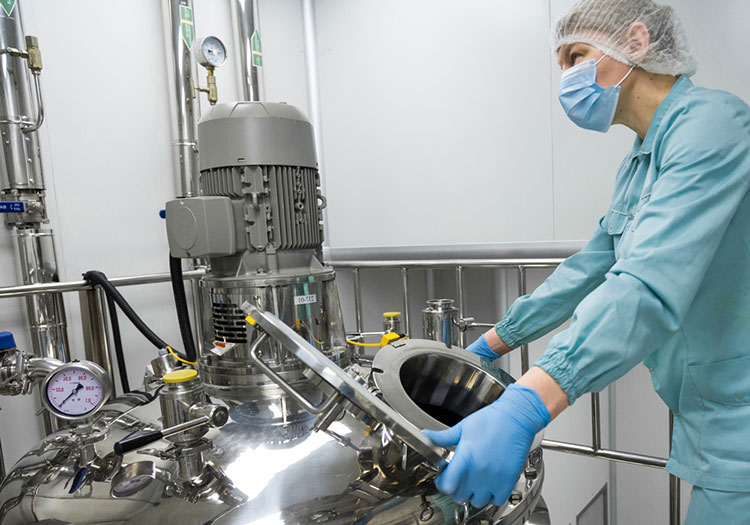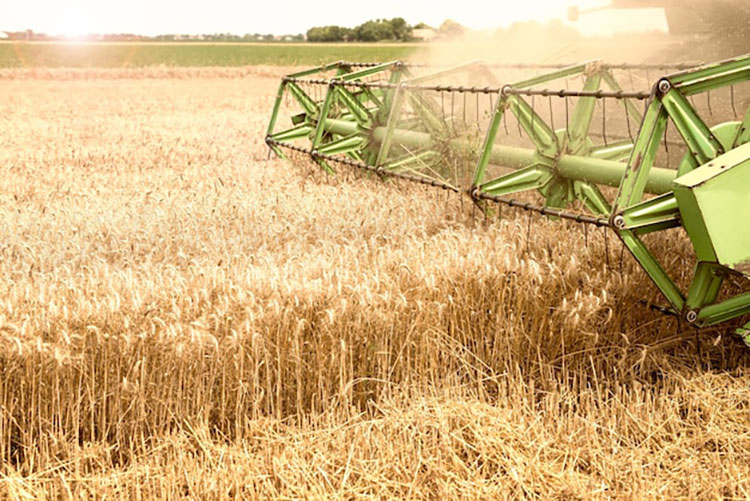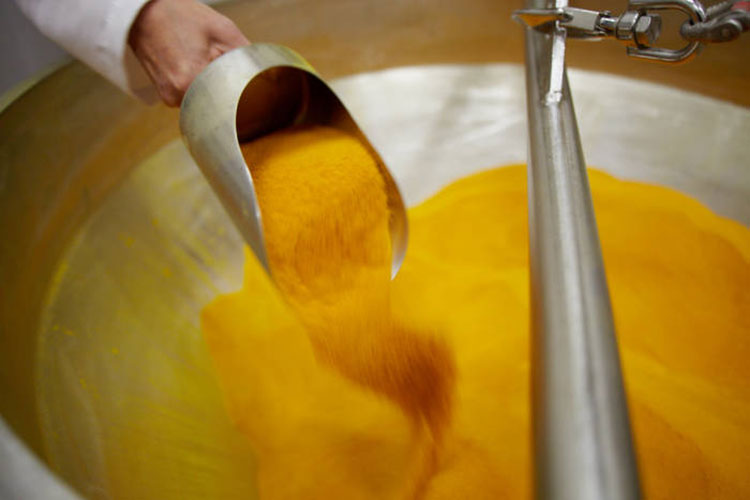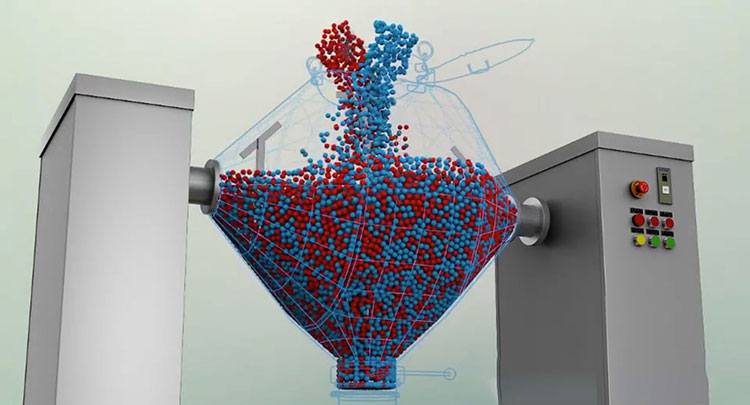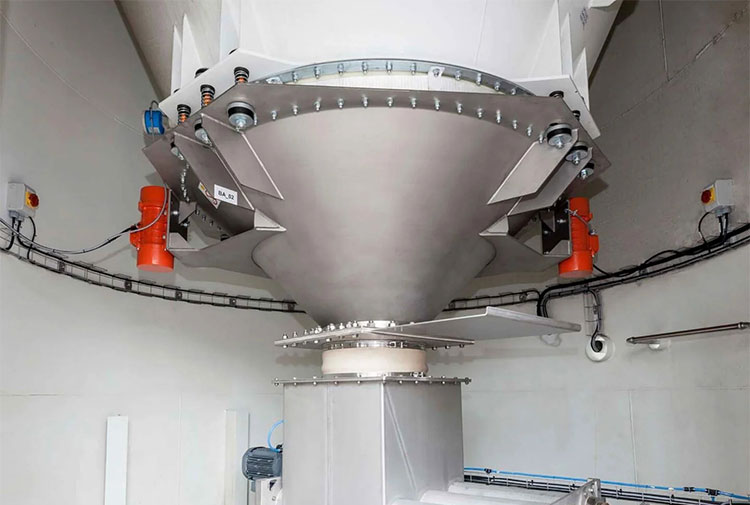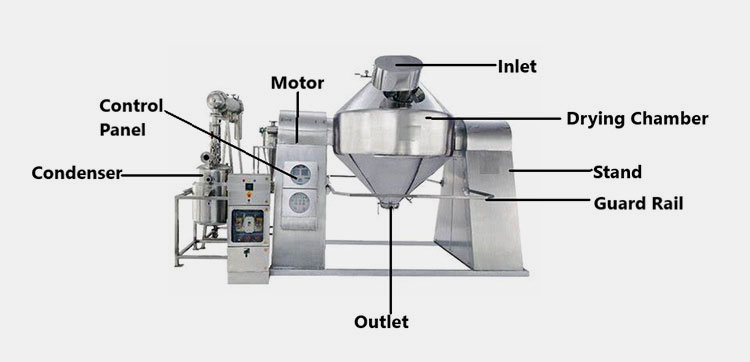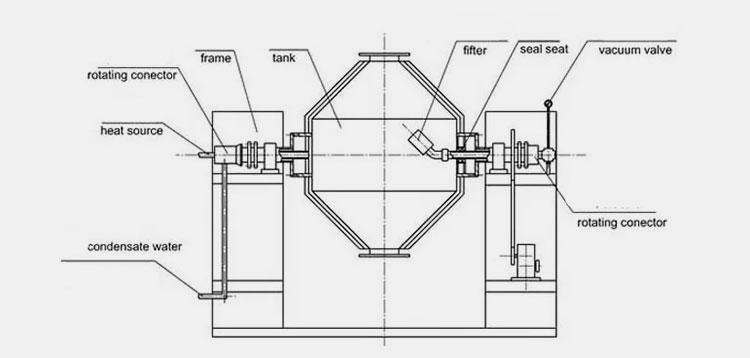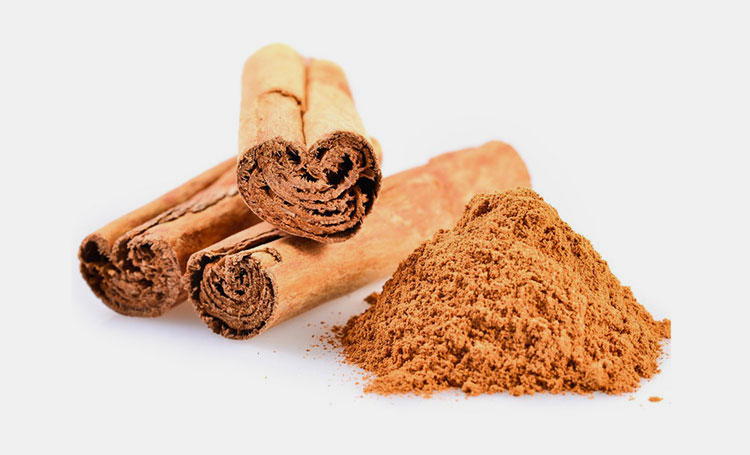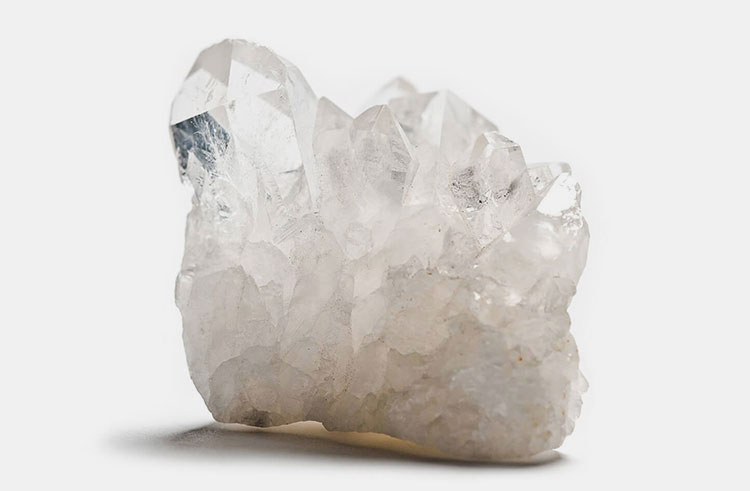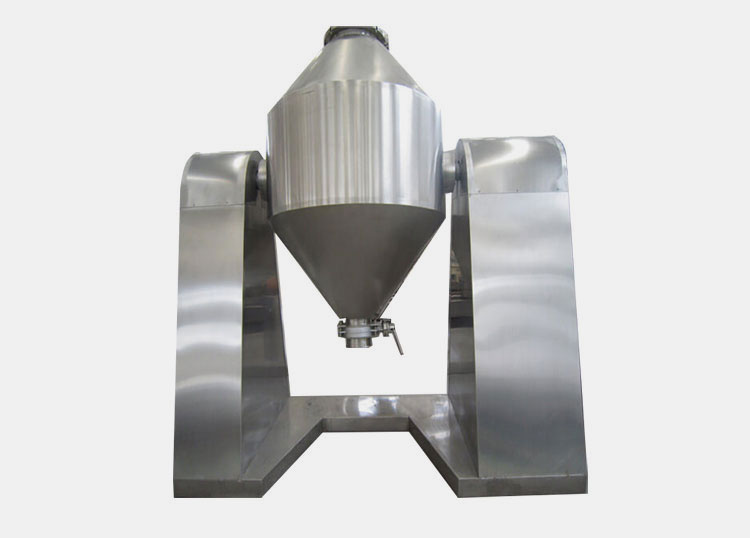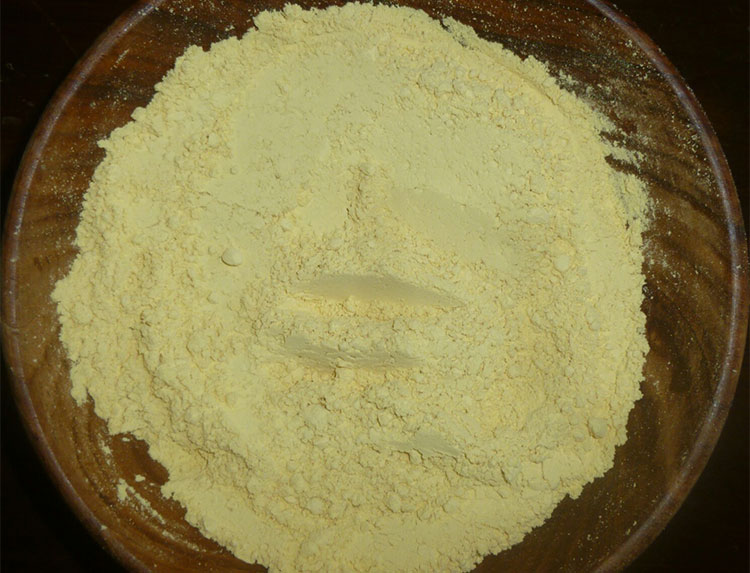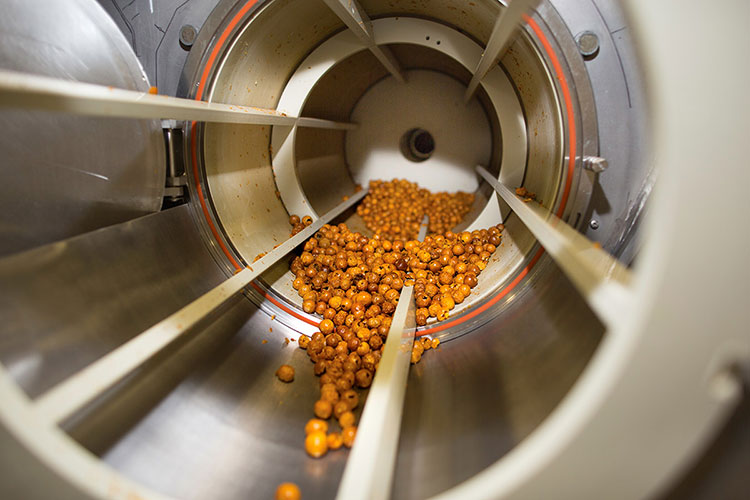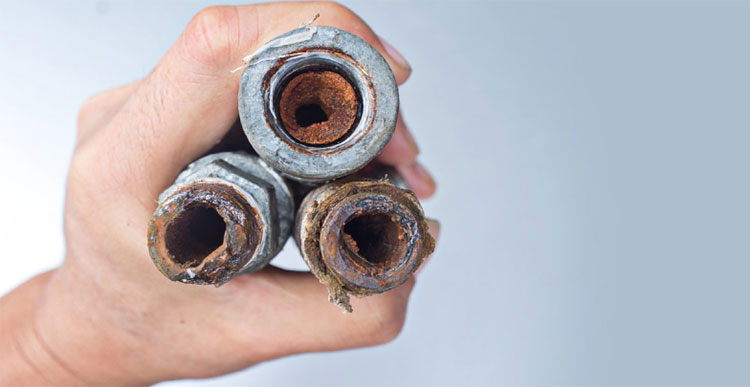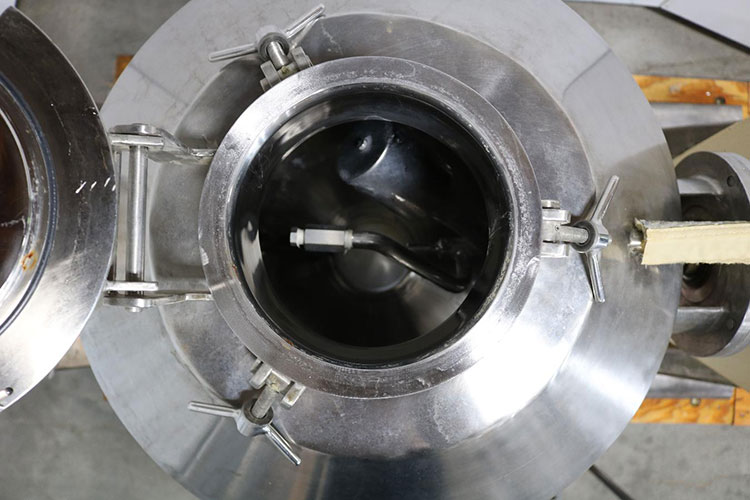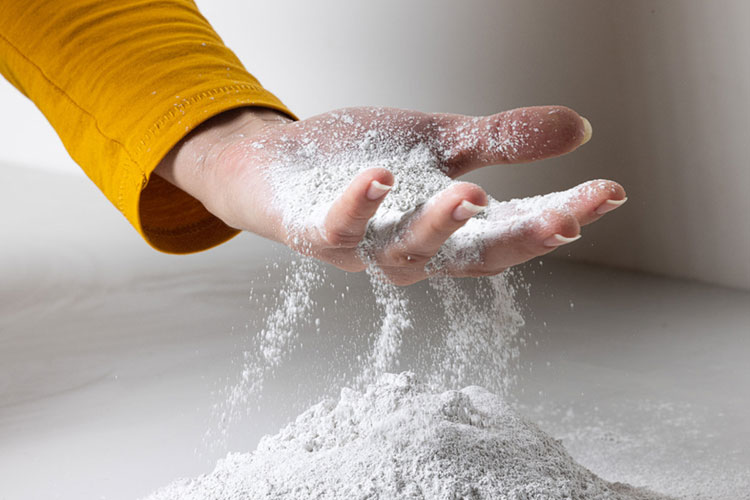Double Cone Rotary Vacuum Dryer: The Complete Buying Guide In 2025
Drying is an integral process in industries and improves product quality by reducing the moisture content that can lead to contamination and microbial growth. Hence, an industrial dryer is one of the most essential machines in production to control the drying rate and enhance the efficiency of manufacturing.
Double cone rotary vacuum dryer is one of many pharmaceutical dryers and is best for low-temperature and gentle drying, preserving the structural integrity of delicate substances. So, are you ready to install a double cone rotary vacuum dryer in your manufacturing unit; then do not look at other sites. This knowledgeable and interesting guide is written with the sole aim of educating you on advantages, working, uses, troubleshooting, and so much more regarding this machine. Let’s have an insight.
1.What is meant by a double cone rotary vacuum dryer?
Allpack Double Cone Rotary Vacuum Dryer
A double cone rotary vacuum dryer is a renowned dryer that combines mixing and drying in one industrial equipment. It concentrates materials at low temperatures using a vacuum state. It is a cylindrical cone-shaped structure that achieves unvarying mixing and drying by the tumbling rotation of the drying chamber.
It has a slow rotational motion that results in the impact of materials against the walls of the drying chamber and causes consistent mixing of feed. In vacuum conditions, the materials are consistently heated through walls, which accelerates drying and decreases the length of the drying cycle. It capably performs drying by extracting various solvents and water from wet feed.
2.How is a double cone rotary vacuum dryer popular in industries?
A double cone rotary vacuum dryer is an extraordinary drying machine that offers various advantages to production facilities. It is typically popular in wide-ranging industries because of its safe, effective, and inexpensive drying. Have a look at the noteworthy pros of a double cone rotary vacuum dryer:
Effective Drying and Mixing
Effective Drying and Mixing- Picture Courtesy: Altana AG
The design of a double cone rotary vacuum dryer is cylinder-shaped, which aids in the full and consistent revolution of the feed. This even and uniform mixing results in continuous agitation and tumbling of feed, drastically maximizing the surface area of the product for evaporation. This not only prevents agglomeration but also allows an effective and improved drying rate.
Increased Solvent Recovery
Increased Solvent Recovery
A double cone rotary vacuum dryer is increasingly popular in manufacturing units because it has excellent solvent recovery. The low-temperature drying in this machine lowers the boiling point of liquids and these solvent vapors are collected and recovered with the help of a condenser- installed with a drying machine. This recovery of solvents is very advantageous for industries, where precious and expensive solvents are used again and again in manufacturing.
Reduced Contamination Risk
Reduced Contamination Risk- Picture Courtesy: P-Met
This machine has a fully enclosed structure with a gap between a cylindrical body and a vacuum pipe sealed from durable and strong Teflon materials, resulting in airtight securing of the drying chamber. Furthermore, drying in this machine happens in the presence of a vacuum that prevents the entrance of gases and other contaminants inside the drying chamber. This reduces the risk of contamination and maintains sterile and hygienic conditions for product manufacturing.
High Energy Efficiency
High Energy Efficiency
Low energy consumption is the biggest benefit of a double cone rotary vacuum dryer. Less amount of energy is required to heat and dry materials, reducing operational expenditures needed to maintain the facility. Energy-efficient drying is achieved with vacuum processing and tumbling motion in this dryer. Moreover, it cut down thermal degradation, making it a safe drying machine for different feed groups.
Low Maintenance
Low Maintenance
A double cone rotary vacuum dryer has a straightforward construction with fewer rotating components that are easily assembled and disassembled, which allows ease in maintaining, cleaning, and operating the machine. Moreover, decreased maintenance requirements and convenient cleaning increase the lifespan of the machine, making it a hit among manufacturers- looking for ways to save finances.
3.Where does a double cone rotary vacuum dryer find its use?
A double cone rotary vacuum dryer is fabricated to attain outclass efficiency in drying operations. It has exceedingly reduced end moisture values, thus most industrial units prefer integrating this machine into their facilities. Let’s learn about the distinct uses of a double cone rotary vacuum dryer:
Pharmaceutical Industry
Pharmaceutical Pills
In the pharmaceutical industry, wet granulations and wet mixing are involved, therefore, wet masses are routinely dried in this industry by a double cone rotary vacuum dryer. This machine is very useful in rapidly drying the moisture content of active drug ingredients, excipients, and other pharmaceutical materials without causing any damage to their therapeutic properties. This device is typically used for its controlled drying operation to attain stability in drug formulations.
Chemical Industry
Chemicals- Picture Courtesy: RIAC
A double cone rotary vacuum dryer is an ideal device for processing delicate, thermos-sensitive, and, reactive chemicals. This machine is integral in extracting moisture from fine chemical powders, catalysts, and, other sensitive chemicals. It does not cause undesired chemical deterioration and prevents the reactivity of various chemicals while drying.
Food Industry
Food
In a double cone rotary vacuum dryer, different food products, for instance, flavors, snacks, coffee, tea, herbs, spices, and dairy powders are successfully dried. This machine is excellent for mixing and drying because it preserves crucial properties, such as aroma, freshness, flavor, texture, and, the appearance of food ingredients. In this way, more safe and gentle drying of food products is attained.
Dye and Pigment Industry
Dye and Pigments
An application of a double cone rotary vacuum dryer is very beneficial because it offers superior and meticulous drying rates. Pigments and dyes used in paints and other coloring products are extremely heat-sensitive, so a double cone rotary vacuum dryer is effective in removing their solvent content and assists in upholding their color intensity, vibrancy, saturation, and hue. This drying device also aids in attaining optimized products with uniform characteristics.
Biotechnology Industry
Biotechnology Industry- Picture Courtesy: Surf Search
This drying machine is ideal for dehydrating different types of heat-sensitive and bioactive substances, for example, proteins, enzymes, antibiotics, amino acids, and vitamins. Low-temperature drying in a double cone rotary vacuum dryer is best for preserving the structure and functions of biological molecules. Controlled drying conditions under vacuum conditions do not denature and degrade vaccines and other biologics.
Agriculture Industry
Agriculture Industry
In the agriculture industry, various types of seeds and plants are dried with the help of a double cone rotary vacuum dryer to retain their traits and efficacy. It excels in drying feed and other agricultural compounds and produces top-notch and stable end-products for quality control procedures.
Ceramic Industry
Ceramic
In this industry, vast and diverse types of products are manufactured-ranging from conventional pottery to high-tech ceramic goods. A double cone rotary vacuum dryer is a superior machine that offers gentle dehydration of delicate ceramic structures. Low-temperature drying and precise moisture extraction are suitable for preserving the integrity of ceramics without warping them.
4.What are the working stages of a double cone rotary vacuum dryer?
A double cone rotary vacuum dryer is recommended in industrial settings because of its efficient solvent vaporization and increase in expiration dates of various materials. Learning about the working stages of this machine is important for engineers and developers, as it helps in operating and maintaining the machine. Let’s understand the working stages of a double cone rotary vacuum dryer:
Loading of Feed
Loading of Feed- Picture Courtesy: MegaFood
At the start, raw feed (wet mass, slurry, or paste) is introduced inside the drying chamber of a double cone rotary vacuum dryer through the top inlet. The quantity of feed placed inside the device is based on the processing needs and working capacity of a dryer. Usually, about 30-50% of the drying chamber is loaded to give space to feed for rapid movement during rotation.
Sealing and Vacuum Formation
Sealing and Vacuum Formation- Picture Courtesy: Italvacuum
As soon as the feed is deposited in the drying chamber, it is airtightly sealed to prevent the access of air inside the device. After sealing, the vacuum pump present in a double cone rotary vacuum dryer decreases the inside pressure by extracting air inside the device. Vacuum formation is essential for reducing the boiling point of the solvents, consequently, removal of solvents and drying occur at decreased temperatures.
Material Heating and Evaporation
Material Heating and Evaporation
This device is composed of three jacketed layers that provide insulation to prevent heat losses. The heat source, such as steam, conductive oil, or hot water is applied to the middle layer. Due to rotation, materials continuously and uniformly come in contact with heated walls.
The inner moisture comes to the surface due to heat transference and moisture saturation leads to evaporation under low temperatures. These solvent vapors are extracted out of the chamber through a vacuum pump and are recovered by collection in the condenser.
Cooling and Drying
Cooling and Drying- Picture Courtesy: Daxner
After complete drying, the jacketed shell of drying is cooled by use of chilled water. This lowers the product temperature before unloading so that heat-sensitive materials are not damaged. Finally, the vacuum is gradually released from the drying chamber and the inner pressure is returned to normal.
Afterward, the material is offloaded from the machine by a lower outlet. The tilting of cone-like configuration assists in feed removal and complete discharge, reducing feed retention.
5.What is the structural configuration of a double cone rotary vacuum dryer?
A double cone is a cylindrical device and its top and bottom parts are conical. It has a speed reducer, motor, and manhole. The basic components of a double cone rotary vacuum dryer are mentioned below:
Parts of a Double Cone Rotary Vacuum Dryer
| Motor | The motor is integral in a double cone rotary vacuum dryer and is responsible for powering the machine, which helps in the rotation and tumbling of feed. It is located on one side of the device and is attached to a rotary vessel through a gearbox. |
| Inlet | The feed to be dried is loaded inside the drying chamber through the inlet port. This opening is specially engineered to conveniently introduce the materials in the device. It is situated on the top end of the machine. |
| Drying Chamber | It is a central part of the machine and drying procedures occur in this part. With the rotation of this vessel on the central axis, materials tumbled and heated with contact with the external jacket system. |
| Stand/Frame | The entire device is supported by a strong and durable frame or stand. It balances the drying vessel and allows its rotation. This structure reduces the vibration of the machine during the drying operation. |
| Guard Rail | It is a safety feature present around the rotating cylindrical structure to avert unintentional contact during the drying process. It is necessary for operator safety. |
| Outlet | The dried feed is offloaded from the machine by a port located at the bottom of the drying barrel. This discharge port has a conical structure that easily discharges feed by gravity. |
| Control Panel | The drying procedure is regulated and managed by the control panel. With the help of this computerized panel, operators can easily input the operational inputs, such as rotational speed, pressure, drying time, etc. |
| Condenser | The vaporized moisture is collected and condensed in the condenser. It converts vapor back into liquid for recovery. It is integrated with vacuum lines and is present at the periphery of the vacuum pump to aid in cooling and collection. |
| Rotary Joint or Connector | This part is integral in the distribution of heating liquid to a jacketed layer of the machine. It is found between an immobile heating source and a drying chamber. |
| Heat source | The function of the heating source is to deliver heat for drying. It supplies steam, hot water, and oils to a rotary joint that in turn moves them to the jacket for circulation and drying of material. |
| Condensate Pipe | It is a connection between the condenser and the drying chamber. It disposes of the vapors to the condensate trap and is integral in the recycling of solvents. |
| Filter | This type of filter is equipped with a vacuum to protect the vacuum pump or condenser from fine particles, dust, debris, and residues. The particulates cause blockage of a vacuum pump and decrease its throughout. |
| Seal Seat | It offers sealing to crucial components, like outlet, inlet, and vacuum pipes to uphold the vacuum inside the chamber by decreasing air leaks. |
| Vacuum Valve | This valve is important in regulating the vacuum level in the drying vessel. It is located along vacuum pipes and manages the removal of air and moisture. |
6.What materials are specially dried in a double cone rotary vacuum dryer?
Let's go into details of the type of materials, well suited for drying in a double cone rotary vacuum dryer.
Readily Oxidizable and Hazardous Materials
Flammable Materials
Do your materials oxidize readily, or are they hazardous? This dryer produces an inert environment, making it ideal for:
Sensitive chemicals: materials that may be flammable or degrade in the presence of oxygen.
Pharmaceuticals: sensitive drugs or chemicals that react to open air.
Materials That Need Solvent Recovery
Managing Toxic Gasses
Want to recover solvents or manage toxic gases safely? Then this dryer is best for you.
Recovery of solvents used in pharmaceutical manufacturing, thereby, decreasing your cost and making you comply with the environmental requirements.
Managing poisonous vapors and safe drying of volatile compounds.
Crystalline Materials
Crystalline Compounds
If your material needs to stay in its crystalline form, then this dryer will not hurt it, as it works very tenderly. Therefore, it is best for:
Crystalline drugs: drugs that need to retain their structure during drying.
Fine chemicals: easily impacted by changed structure or chemical composition.
Low Residual Volatile Content Materials
Specialty Polymers
The vacuum process in a double cone rotary vacuum dryer enables you to reach very low residual content quickly, which is perfectly suited for cemicals of the highest purity, where minor moisture can be critical and specialty polymers.
Toxic or Irritant Materials
Toxic Materials
Dealing with toxic or highly irritant substances? The closed system of this dryer ensures the handling and processing of the following toxic matetrials, such as pesticides that are toxic materials and must be carefully dealt with as well as chemical intermediates- dangerous substances that require a controlled environment.
7.What is the rotational speed of a double cone rotary vacuum dryer?
Rotational Speed of a Double Cone Rotary Vacuum Dryer- Picture Courtesy: CRIOX® System
The double cone rotary vacuum dryer has a rapid drying rate and one expects it to have fast rotational speed. On the other hand, it rotates slowly with a speed of 3-20 revolutions per minute. It has a slower speed because of several reasons, such as:
First, the measured rotational speed of a double cone rotary vacuum dryer allows gentle tumbling and even encounters with heated walls. This prevents the loss of structural integrity and high frictional force during drying. Moreover, feed does not adhere to edges and dead zones in the drying chamber with the help of consistent rotation. This results in uniform drying processes.
Also, higher speed leads to over-agitation of materials and their clumping, so slow rotational speed in this drying machine prevents irregular distribution of feed.
8.What are the typical maintenance procedures for a double cone rotary vacuum dryer?
Here are the step-by-step procedures in the maintenance procedures for a double cone rotary vacuum dryer that can be carried out systematically:
Double cone rotary vacuum dryer- Picture Courtesy: Griffin Machinery
| Vacuum System Check | Check the vacuum pipes for blockages or obstructions in the vacuum pipeline.
Check if vacuum pump seals are intact and free of leaks. Check if the air rubber seals on the rotating bearing have to be replaced. |
| Electrical System Checks
|
Check electrical contacts- The entire connection must be secure with no sign of wear and tear.
Check the grounding wire- This should be in good condition as well to avoid any risk of electric fires or shocks. |
| Heating System Maintenance
|
Check the heating medium if the thermal oil or hot water circulating in the right manner.
Check the heating elements, if the temperature falls in the range as required while working with an efficiency level. Check for leaks and address any signs of overheating or leakage promptly. |
| Lubrication of Mechanical Components
|
Lubricate bearings and chains- Apply or replace lubricating oil or grease regularly to prevent wear and tear.
Replace worn-out lubricants and fresh lubricants should be applied at intervals, especially on moving parts. |
| Cleaning and Disinfection
|
Clean drying chamber- Remove any residue from the drying chamber after every use.
Disinfect the chambers and follow proper sanitation protocols, especially in industries like pharmaceuticals. |
| Filter and Exhaust System Maintenance
|
Clean air filters- regularly clean the filters to avoid any blockages.
Check the exhaust system and ensure there is no abnormal pressure or obstruction in the airflow. |
| Overload Prevention
|
Monitor material load- Instruct operators to maintain a recommended 30-50% chamber capacity.
Examine material bulk density- Ensure the material does not exceed 0.6 g/cm³ as higher could reduce efficiency and impact dryer life. |
| Adjust Vacuum System
|
Monitor vacuum pressure- Keep the vacuum level in an appropriate range during drying. Avoid too low and too high.
Check for leaks or blockages-Resolve any pipeline issues that may lead to fluctuations in vacuum levels. |
| Noise Reduction
|
Tighten loose parts- Fix any loose bolts or components to reduce noise. Inspect bearings and chains-Lubricate or replace parts causing excessive noise. |
| Wall Material Buildup Prevention
|
Clean the drying chamber walls- Regularly remove any material buildup on the inner chamber walls.
Optimize feed rate and temperature- Adjust the drying speed and temperature to prevent materials from sticking. |
| Calibration
|
Calibration of sensors- Ensure accurate readings from vacuum and temperature sensors
Check Gauges- Pressure gauges must display the pressure within satisfactory limits. |
9.How to troubleshoot frequent problems encountered in a double cone rotary vacuum dryer?
A double cone rotary vacuum dryer is a state-of-the-art machine, designed for decreasing downtimes and maximizing efficiency. Still, it faces occasional technical issues that negatively impact its productivity. However, these issues are easily managed by proper knowledge and training. Hence, for your information, we are penning some frequent problems and their solutions for a double cone rotary vacuum dryer:
Product Contamination
Product Contamination- Picture Courtesy: Unitak
| Cause | Troubleshooting |
| Due to insufficient and improper cleaning from earlier batches, the end-products are cross-contaminated in the dryer.
Sometimes, there are loose connections or leakage in the vacuum chamber due to which contaminants enter the drying vessel. |
To avoid contamination, it is ideal to integrate a Clean-in-Place (CIP) system to thoroughly clean the machine between batches.
Also, examine and secure every sealing of the machine to avert the entry of contaminants. |
Slow Drying Time
Slow Drying Time- Picture Courtesy: MicroFood
| Cause | Troubleshooting |
| The slow drying time is because of several causes, for instance, decreased vacuum pressure or leakage. Improper heat distribution is due to improper temperature programming.
The feed substances have a higher amount of moisture. |
To increase drying efficiency, it is best to:
Inspect the leaks in the vacuum mechanism and verify the correct working order of the vacuum pump. Review the temperature inputs and alter them as per the requirement of feed. Also, pre-dry the feed to extract surplus moisture before loading it into the drying machine. |
Clogging in Vapor Pipe
Clogging in Vapor Pipe- Picture Courtesy: Mr. Rooter Plumbing
| Cause | Troubleshooting |
| Sometimes, there is a reduced flow of vapors through the vapor pipe because of clogging of vapor lines. The possible causes of this issue are:
The buildup of particulates or product residues inside the vapor pipe or condenser. Insufficient vapor transfer is also owing to improper vacuum settings. |
To resolve this problem, you must:
Properly and completely clean the vapor pipe for extracting any undesired product buildup. Secondly, properly assess the vacuum valve for accurate functionality and ensure every setting of the vacuum level is properly input. |
Material Leak from the Drying Chamber
Material Leak from the Drying Chamber- Picture courtesy; Capovani Brothers Inc.
| Cause | Troubleshooting |
| Have you ever seen feed dripping from the drying chamber? It can be due to damaged, rusty, old, and defective seals, usually present on inlet and outlet ports or vacuum valves. The defective construction, for instance, cracking or breakage in the drying vessel also causes leakage. | It is recommended to follow these tips to rectify this problem:
You must examine and switch old and defective seals, bearings, gaskets, and O-rings at loading or discharge ports. Routinely evaluate the drying chamber for defects and replace or repair depending upon the requirement. |
Overheating of Feed
Overheating of Feed- Picture Courtesy: Oxara
| Cause | Troubleshooting |
| This issue is due to:
Wrong temperature input or defective heating elements. Drying temperatures exceed because of poor vacuum levels. |
You must resolve this problem by:
Recalibrating temperature control mechanism and verifying that the heating element is at the correct temperature. Checking the vacuum system to verify its seamless working efficiency. Inspecting heat transfer via jacket and ascertaining that rotary joint is performing as expected. |
Conclusion
A double cone rotary vacuum dryer is a one-stop and turnkey solution for effectively, swiftly, hygienically, and, safely drying thermo-sensitive, hygroscopic, delicate, toxic, and volatile substances. Its constant rotation and low-pressure conditions are pivotal in smooth and seamless drying. It is a well-prioritized device in not only healthcare sectors but also in developmental and manufacturing areas because of its sustainability and profitability. So, after reading a huge array of advantages are you now tempted to add a double cone rotary vacuum dryer to your productions? If yes, you are invited to look at the catalog of Allpack’s affordable, high-tech, and efficient drying machine. We are a world leader in designing reliable and FDA-compliant machines.
Don't forget to share this post!
CONTACT US
Tell us your raw material and project budget to get quotations within 24 hours.
WhatsApp Us: +86 181 7101 8586
The Buyer's Guide
